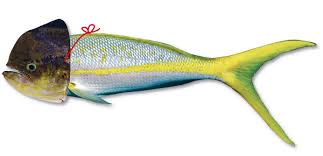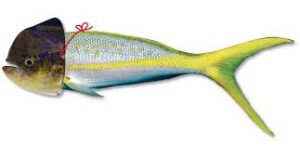by Mila McManus MD and Nancy Mehlert MS
There is no question, that if you knew everything about your food and what the FDA considers “acceptable”, you would be shocked. It may surprise you (or not) that the FDA doesn’t have the resources to pursue all the fraud in the marketplace. And like so much in government, the FDA can be heavily influenced. Additionally the food industry is powerful and busy in Washington fighting for itself, and not usually for what is best for you. Unfortunately, that leaves us to figure out what really is safe to eat and sometimes that is seemingly impossible to do. Moreover, the food industry and marketing techniques today are laden with an over-abundance of hype and confusion. Today we are sharing a few food examples of “fake food”. The information about fish and olive oil is taken from Larry Olmstead’s 2016 book called Real Food/Fake Food.
Sushi and Other Fish Scams¹
It may be surprising to you that there are very serious and frequent scams in the fish world where less expensive and sometimes dangerous fish are sold as a premium species. According to Larry Olmstead in his 2016 book Real Food, Fake Food, “The seafood industry is rife with fraud, substitutions and adulteration.” The non-profit marine conservation group, Oceana, launched a study in New York City and found fraud in 58 percent of the retail outlets. In addition, 39 percent of restaurants were serving something other than what the menu claimed was being served. In the same study, they found that every single sushi restaurant, 100% of them, served fake fish. Upon further research, they discovered these trends existed as the rule for the entire country. In sushi restaurants, the single most common substitute for tuna is escolar, one of the most dangerous sea food products you can buy, nicknamed “Ex-lax fish” because it contains a natural wax ester that causes gastric distress and diarrhea. It is never shown on a menu as escolar, yet it is one of the most widely served fish in this country. Other frequent trade out scams include replacements for grouper and red snapper. Apparently, according to Larry Olmstead, almost all red snapper sold in the U.S. is fake and more likely to be tilefish, which is on the FDA’s do-not-eat list for children and pregnant women because of high mercury levels. Tilefish is a common trade out for halibut on the menu too. In the shrimp world, it is extremely common for farm-raised to be labeled wild caught. Olmstead also says that shipping and country-of-origin information is routinely, and illegally, falsified to cover up poaching and to hide fish coming from dangerous farms that use unapproved chemicals and even slave labor. Did you know that wild Atlantic salmon is extinct, so always farm raised when you see it on a menu or package? Alternatively, Alaskan and Pacific Salmon is wild, where fish farming is illegal (in Alaska).
Olive Oil²
There are many ways to adulterate olive oil. To begin with, the legal definition says that olive oil is nothing but the juice extracted from high-quality, fresh, otherwise unprocessed olives. It is a time sensitive issue from proper ripeness and speed to press from picking. The best oils are pressed within 12 hours from picking at perfect ripeness. The three main ways to adulterate it are to dilute it with less expensive oils, dilute it with lower grades of olive oil that have been heavily refined with chemicals, or failing to pick at peak ripeness and press immediately, resulting in an older, rancid oil. Most of our olive oil comes from Italy where Italian investigators have found plenty wrong with olive oil from hydrocarbon residues, pesticides and pomace oil laced with mineral oil, and polycyclic aromatic hydrocarbons which are proven carcinogens and that can also damage DNA and the immune system. According to Olmstead, virtually every investigation, whether by universities, journalists, law enforcement or government agencies, have found the olive oil industry rife with fraud. Our supermarket brands are almost all, without exception, included in these fake oils and routinely fail testing. In 2011, a large sample supermarket test was conducted of the top selling imported “extra-virgin” olive oil brands in the United States and 73% of the time they failed to meet the basic legal standard for olive oil. Colavita performed best but failed 50% of the time and Pompeian took last place and almost never passed. As recently as November 2015, the police in Turin, Italy investigated seven leading producers which included Bertolli and Carapelli and all seven brands failed despite being labeled “100% Extra Virgin” olive oil. By law, “virgin” oil can only be extracted by physical processing such as crushing or centrifuges without the use of chemicals or heat. Sadly, you can see that enforcement is non-existent and everyone in the industry knows it.
¹ Real Food Fake Food by Larry Olmsted, Copyright 2016, Published by Algonquin Books of Chapel Hill, Chapter 3, Fishy Fish
² Excerpts from Real Food Fake Food by Larry Olmsted, Copyright 2016, Published by Algonquin Books of Chapel Hill, Chapter 4, Spoiled Oils: Olive and “Truffle”



